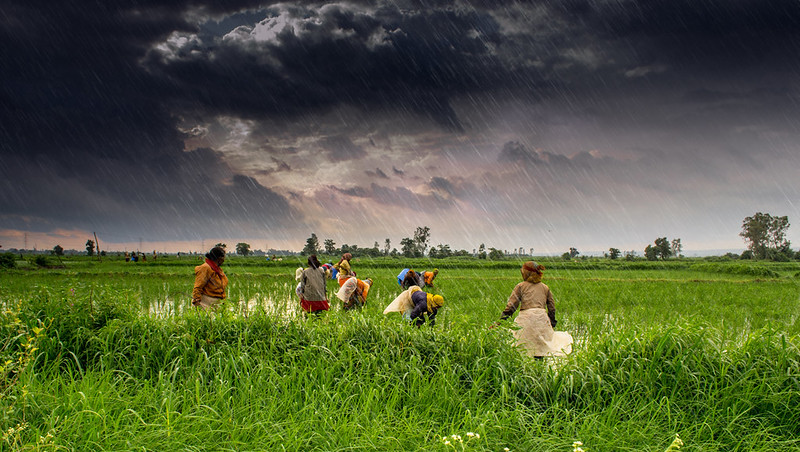Extreme rain is damaging crops in India and farmers’ income
Heavy rain is making farmers work even harder as waterlogged crops fail. If these communities cannot adapt to climate change their profits will continue to fall.
U
nseasonal torrential rains and hailstorms have damaged the winter-planted crops of millions of Indian growers, inundating wheat, potato, chickpea and rapeseed farms in large parts of the fertile northern plains, farmers said.
Most farmers were caught by surprise by the repeated rain and hail that has lashed fields full of mature crops, raising concerns about quality degradation, threatening to cut yields, and pushing back harvests.
Farmers in one of the world’s leading food producing and consuming countries sow winter crops from October, a month after the June-September monsoon rains end, with harvesting starting from March. Wheat, rapeseed and chickpeas are the main winter-planted crops.
Rains have hit the wheat crop in the northern states of Punjab, Haryana and Uttar Pradesh, India’s grain belt.
“The crop has suffered extensive and irreversible damage in eastern Uttar Pradesh,” said Sudhir Panwar, chief of farmers’ group Kisan Jagriti Manch. “The government is yet to assess the damage, and by the time the farmers get any compensation from the government, it will be too late.”
Although it is too early to get an exact picture of the extent of the harm to the wheat crop, rain and hail have caused severe damage in Punjab’s farm districts, including Fazilka, Patiala, Sangrur and Amritsar, said Ramandeep Singh Mann, a farmer from the region.
The farm ministry last month forecast wheat output in India, the world’s second-biggest producer, at 106.21 million tonnes in 2020, up 2.5% from the previous year.

Rain and hail hit the rapeseed crop. Photo by Rajarshi MITRA/Flickr
Storage facilities won’t bring revenue back
Although brim-full granaries will help India deal with any drop in wheat output, crop losses will cut farmers’ meagre incomes.
Indian farmers grow staples such as wheat and rice because the Indian government, which runs the world’s biggest food welfare programme, buys the crops at guaranteed prices which invariably go up every year.
Rain and hail hit the rapeseed crop in the tourist state of Rajasthan, which accounts for more than half of India’s rapeseed output. The crop also suffered a good deal of damage in Uttar Pradesh state and the central state of Madhya Pradesh, farmers said.
The untimely rains have also brought misery to potato and chickpea farmers in the northern and some central parts of the country, Panwar said.
“Even the farmers who have been able to salvage their crops, will find it difficult to get reasonable prices due to quality issues,” said Dharmendra Malik, a farm leader from Uttar Pradesh.
The ideas presented in this article aim to inspire adaptation action – they are the views of the author and do not necessarily reflect those of the Global Center on Adaptation.